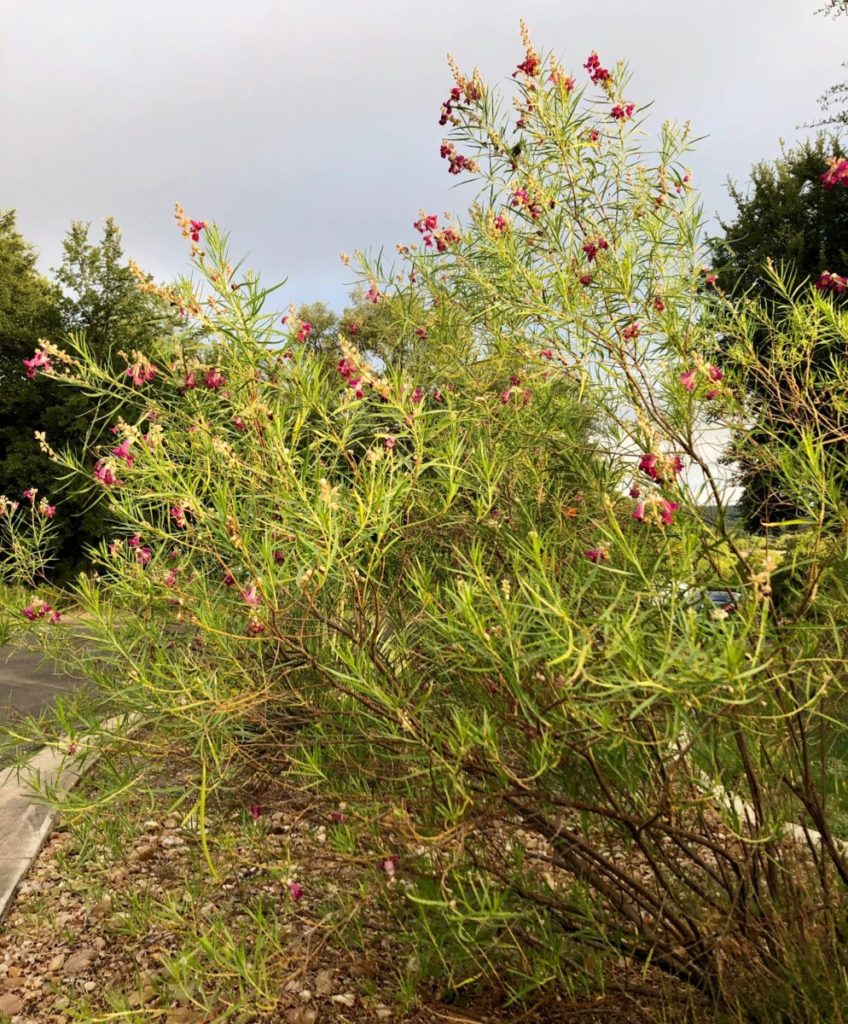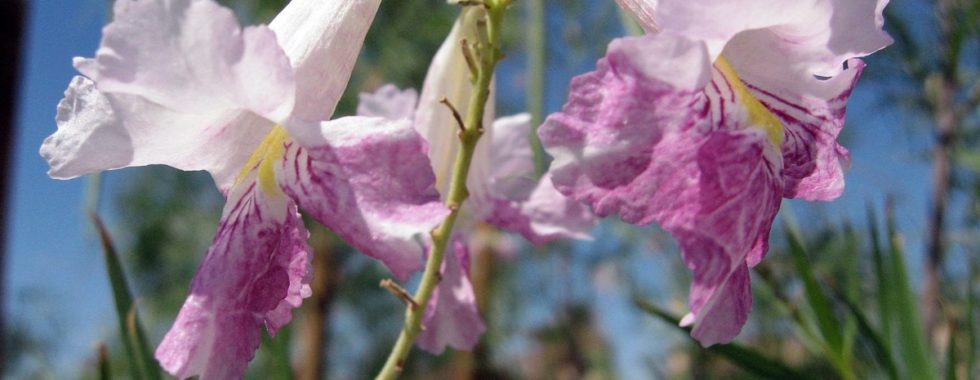For the Love of Trees: Desert Willow
 When a tree is bold enough to bloom in the oppressive heat of a Texas summer, it certainly gets my respect. Nature has gifted us with several summer-blooming species in our part of Texas, and a favorite of mine is the desert willow, Chilopsis linearis. The graceful shape and delicate foliage are eye-catching enough, but when its pinkish funnel-shaped blossoms appear, you can begin to believe you’ve stepped into a desert oasis.
When a tree is bold enough to bloom in the oppressive heat of a Texas summer, it certainly gets my respect. Nature has gifted us with several summer-blooming species in our part of Texas, and a favorite of mine is the desert willow, Chilopsis linearis. The graceful shape and delicate foliage are eye-catching enough, but when its pinkish funnel-shaped blossoms appear, you can begin to believe you’ve stepped into a desert oasis.
Like a true Texan, the desert willow is tolerant of hot sun and dry conditions and generously shares its blossoms from spring to late fall. A beautiful tree to include in your own landscape, desert willow attracts native birds, and its nectar-producing blossoms can be a magnet for hummingbirds. The seed pods of this tree are also a good source of food for wildlife.
Even though it is named for and shaped much like a willow tree, it is not related. Instead, the desert willow is actually related to Catalpa trees, yellow bells (Tecoma stans), and trumpet vine (Campsis radicans).
My love for trees extends well beyond their aesthetic benefits to what they may offer medicinally, and although my expertise is with native European trees, I have recently begun uncovering the rich resources we have right here in Texas. Researching the desert willow taught me that it has quite a bit to offer. Herbalists collect the young leaves of the tree in spring to early summer to prepare an infusion that, when applied topically, has shown effectiveness in resolving a variety of fungal skin symptoms. A tea of the leaves can also be prepared, and when ingested could assist on a more systematic level for bacterial imbalances. What I personally find intriguing is the presence of cyanin flavonoids in the blossoms, flavonoids being naturally occurring antioxidants. The University of Arizona Cooperative extension does mention a tea prepared from the flowers that has been taken for its antioxidant properties, but I could not locate further information on studies.
Beyond beauty and medical potential, you may find it interesting that the Native Americans across the Southwest used the strong flexible wood of the desert willow in making hunting bows. And it is documented that the Pima tribe, of what is now central and south Arizona, used the wood from these trees to construct homes and thatch roofs, the young twigs for baskets, and the bark to make nets and fabrics.
Native to West Texas and the Edwards Plateau, the desert willow can be spotted throughout the Hill Country. Naturalized in Hays County, they’re in full bloom this month along several SMGA trails, particularly in the Schulle and Ring Tail Natural Areas.
Written by Lauren Hubele, a member of SMGA’s Outreach Committee. She is an author and educator whose practice provides a framework for resolving chronic and acute conditions using gemmotherapy, homeopathy, and a plant-based diet.


